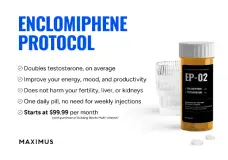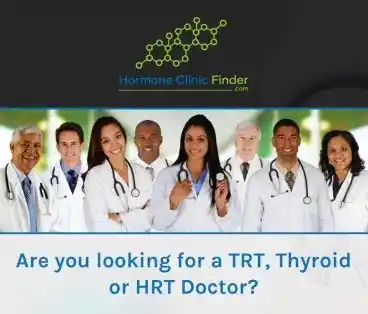Nelson Vergel
Founder, ExcelMale.com
How U.S. Blood Banks Handle Therapeutic Phlebotomy for Men on Testosterone Replacement Therapy (TRT)
Blood centers have had to adapt their policies because the polycythemia/erythrocytosis that often accompanies TRT creates both medical need (frequent blood removal) and regulatory challenges (how to label and use that blood). Key “special considerations” now in place fall into four broad areas:
Illustrative Programs
· Gulf Coast Regional Blood Center (Houston, TX)
– TRT donors may give more frequently than 8 weeks; no fees; must keep therapeutic order on file[4].
· Carter BloodCare (Texas)
– FDA variance allows draws every 14 days; no-cost phlebotomy for TRT donors who meet allogeneic criteria; dedicated “Testosterone Therapy” info page[5][3].
· Vitalant (national)
– Offers TP for TRT; standard 56-day interval if donating for transfusion; higher-frequency draws available by appointment with a physician order and subject to a special handling fee[6][9].
· We Are Blood (Austin, TX)
– “TTCX” program: TRT donors qualifying for community use can donate RBCs; plasma discarded; physician order only if <56-day interval or other disqualifiers[2].
Regulatory Background Driving These Policies
1. FDA alternative procedure (640.120) approvals grant centers permission to use red-cell components from TRT therapeutic donors and to waive disease-labeling rules, but only RBCs can be distributed; other components withheld due to uncertain testosterone content[1].
2. 2018 FDA decision formally allowed RBCs from TRT therapeutic phlebotomies for transfusion, stimulating many blood banks to create “TRT crossover” programs[10].
Practical Take-aways for TRT Patients
· Ask your local center whether it has a TRT program; many national networks (Vitalant, Versiti, Carter, We Are Blood, Gulf Coast, LifeShare, Kentucky Blood Center) now accommodate therapeutic needs.
· Bring or file a physician order if you need draws more often than every 56 days or if previous labs show Hct > 54%.
· Expect RBC-only donation; plasma/platelets will not be used.
· No fees are typical when you meet standard donor criteria and stay within FDA-allowed frequency; otherwise modest service fees may apply.
These tailored protocols let men on TRT control hematocrit safely while bolstering the nation’s red-cell inventory.
1. https://www.aabb.org/regulatory-and-advocacy/regulatory-affairs/resources/ask-the-fda-and-clia-transcripts/2014-ask-the-fda-and-clia-transcript
2. https://weareblood.org/therapeutic-phlebotomy/
3. https://www.carterbloodcare.org/education-center/types-of-donations/therapeutic-phlebotomy/
4. https://www.giveblood.org/donate/types-of-donations/therapeutic-phlebotomy-form/
5. https://www.carterbloodcare.org/education-center/types-of-donations/testosterone-therapy/
6. https://www.vitalant.org/hospitals/special-collections
7. https://www.giveblood.org/media/1313/request-for-theraputic-phlebotomy.pdf
8. https://www.aetna.com/cpb/medical/data/600_699/0652.html
9. https://www.vitalant.org/eligibility/hh-tt
10. https://pmc.ncbi.nlm.nih.gov/articles/PMC7902463/
Blood centers have had to adapt their policies because the polycythemia/erythrocytosis that often accompanies TRT creates both medical need (frequent blood removal) and regulatory challenges (how to label and use that blood). Key “special considerations” now in place fall into four broad areas:
Area | Typical Blood-bank Practice | Why It Matters |
FDA variance & product labeling | Many centers operate under an FDA-approved alternative procedure (21 CFR 640.120) that lets them draw and transfuse red-cell units from TRT donors without labeling them with the donor’s medical condition. However, plasma and platelet components are discarded or barred from transfusion until more safety data emerge[1]. | Prevents over-loss of usable red cells while protecting recipients from unknown hormone exposure. |
Component restrictions | - Collect RBCs only; plasma/platelets discarded[1]. - Units labeled internally as “TRT crossover” or similar to route them correctly[2]. | Limits hormone exposure risk to patients and simplifies inventory handling. |
Donation frequency flexibility | Centers with an FDA variance can accept TRT donors more often than the standard 56 days, sometimes as often as every 14 days, provided hematocrit targets and physician orders are met (e.g., Carter BloodCare program)[3]. | Meets the therapeutic need of TRT-induced polycythemia without charging the donor or turning them away. |
Fee structures | Most nonprofit centers provide the service at no cost if the donor meets allogeneic criteria (e.g., Gulf Coast Regional, Carter BloodCare)[4][5]. If the donor fails standard eligibility or needs draws more frequently than FDA rules allow, a clinical-services fee is charged (e.g., Vitalant)[6]. | Balances patient access with the added staffing/supply costs of high-frequency draws. |
Physician-order requirements | - If draws occur at ≥ 8-week intervals and the donor clears routine eligibility, no prescription is required at some centers (Gulf Coast form language)[7]. - More frequent or non-qualified draws need a signed therapeutic-phlebotomy order renewed annually[2]. | Ensures medical oversight and documents the therapeutic indication. |
Hematocrit/hemoglobin thresholds | Common stop-rules: do not bleed if Hct < 54% (therapeutic indication gone) or if it falls below standard donor minima (39% men)[4][8]. | Protects donor safety and confirms ongoing medical necessity. |
Donor-history questions | TRT use is explicitly captured during screening so units can be routed to the RBC-only pathway and platelet/plasma are quarantined[1]. | Maintains compliance with the FDA variance. |
Illustrative Programs
· Gulf Coast Regional Blood Center (Houston, TX)
– TRT donors may give more frequently than 8 weeks; no fees; must keep therapeutic order on file[4].
· Carter BloodCare (Texas)
– FDA variance allows draws every 14 days; no-cost phlebotomy for TRT donors who meet allogeneic criteria; dedicated “Testosterone Therapy” info page[5][3].
· Vitalant (national)
– Offers TP for TRT; standard 56-day interval if donating for transfusion; higher-frequency draws available by appointment with a physician order and subject to a special handling fee[6][9].
· We Are Blood (Austin, TX)
– “TTCX” program: TRT donors qualifying for community use can donate RBCs; plasma discarded; physician order only if <56-day interval or other disqualifiers[2].
Regulatory Background Driving These Policies
1. FDA alternative procedure (640.120) approvals grant centers permission to use red-cell components from TRT therapeutic donors and to waive disease-labeling rules, but only RBCs can be distributed; other components withheld due to uncertain testosterone content[1].
2. 2018 FDA decision formally allowed RBCs from TRT therapeutic phlebotomies for transfusion, stimulating many blood banks to create “TRT crossover” programs[10].
Practical Take-aways for TRT Patients
· Ask your local center whether it has a TRT program; many national networks (Vitalant, Versiti, Carter, We Are Blood, Gulf Coast, LifeShare, Kentucky Blood Center) now accommodate therapeutic needs.
· Bring or file a physician order if you need draws more often than every 56 days or if previous labs show Hct > 54%.
· Expect RBC-only donation; plasma/platelets will not be used.
· No fees are typical when you meet standard donor criteria and stay within FDA-allowed frequency; otherwise modest service fees may apply.
These tailored protocols let men on TRT control hematocrit safely while bolstering the nation’s red-cell inventory.
1. https://www.aabb.org/regulatory-and-advocacy/regulatory-affairs/resources/ask-the-fda-and-clia-transcripts/2014-ask-the-fda-and-clia-transcript
2. https://weareblood.org/therapeutic-phlebotomy/
3. https://www.carterbloodcare.org/education-center/types-of-donations/therapeutic-phlebotomy/
4. https://www.giveblood.org/donate/types-of-donations/therapeutic-phlebotomy-form/
5. https://www.carterbloodcare.org/education-center/types-of-donations/testosterone-therapy/
6. https://www.vitalant.org/hospitals/special-collections
7. https://www.giveblood.org/media/1313/request-for-theraputic-phlebotomy.pdf
8. https://www.aetna.com/cpb/medical/data/600_699/0652.html
9. https://www.vitalant.org/eligibility/hh-tt
10. https://pmc.ncbi.nlm.nih.gov/articles/PMC7902463/













